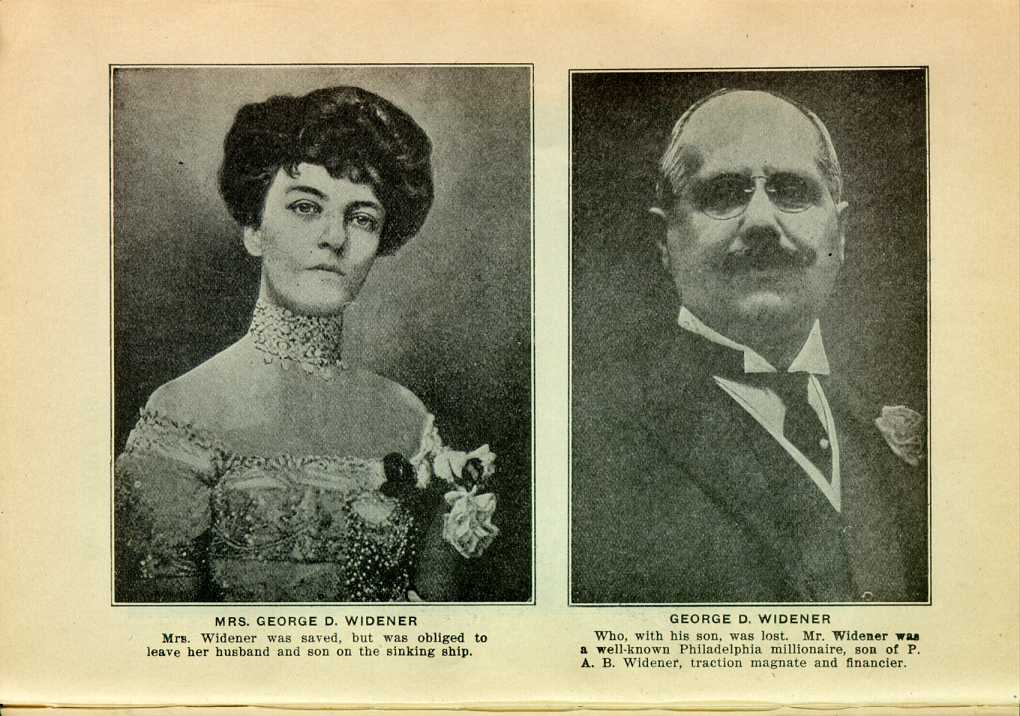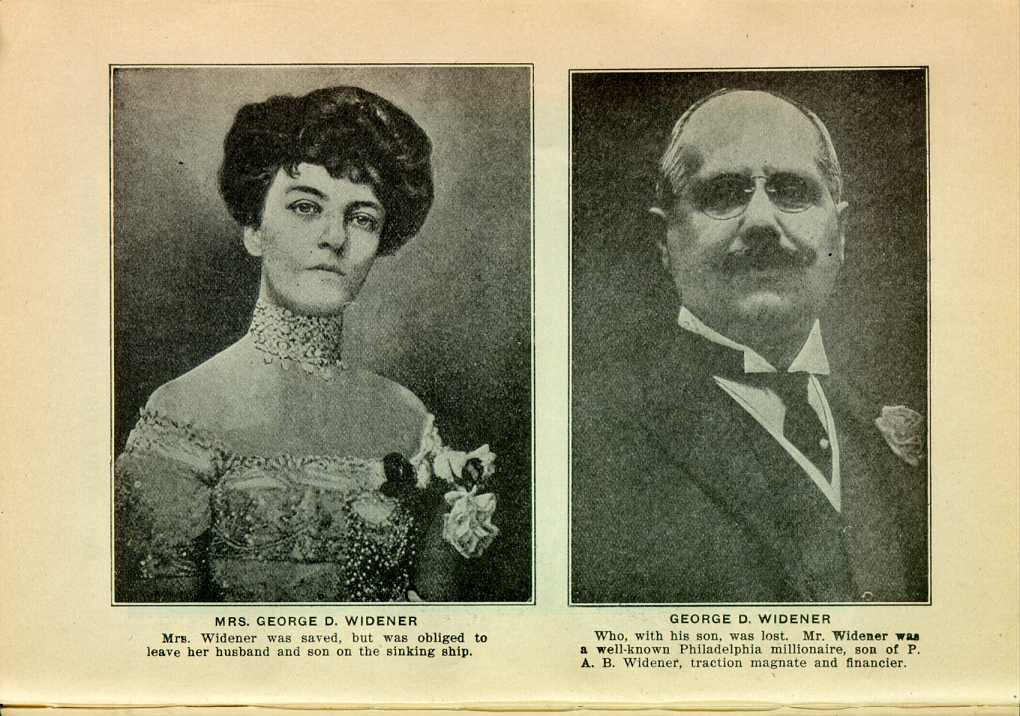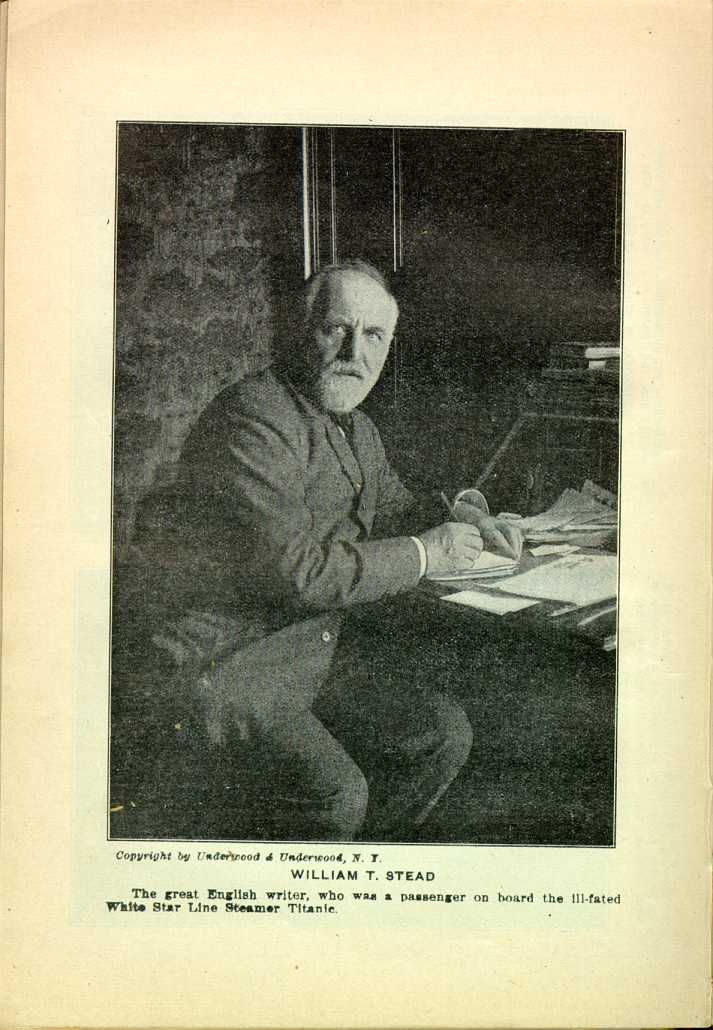|
CHAPTER XIII
THE STORY OF CHARLES F. HURD
HOW THE TITANIC SANK—WATER STREWN WITH DEAD BODIES
—VICTIMS MET DEATH WITH HYMN ON THEIR LIPS
Sinking of the Titanic and Great Sea Disasters | ||
13.
CHAPTER XIII
THE STORY OF CHARLES F. HURD
HOW THE TITANIC SANK—WATER STREWN WITH DEAD BODIES
—VICTIMS MET DEATH WITH HYMN ON THEIR LIPS
THE Story of how the Titanic sank is told by Charles F. Hurd, who was a passenger on the Carpathia.
He praised highly the courage of the crew, hundreds of whom gave their lives with a heroism which equaled but could not exceed that of John Jacob Astor, Henry B. Harris, Jacques Futrelle and others in the long list of first-cabin passengers. The account continues:
"The crash against the iceberg, which had been sighted at only a quarter mile distance, came almost simultaneously with the click of the levers operated from the bridge, which stopped the engines and closed the water-tight doors. Captain Smith was on the bridge a moment later, summoning all on board to put on life preservers and ordering the life-boats lowered.
"The first boats had more male passengers, as the men were the first to reach the deck. When the rush of frightened men and women and crying children to the decks began, the `women first' rule was rigidly enforced.
"Officers drew revolvers, but in most cases there was no use for them. Revolver shots heard shortly before the Titanic went down caused many rumors, one that Captain Smith had shot himself, another that First Officer Murdock had ended his life, but members of the crew discredit these rumors.
"Captain Smith was last seen on the bridge just before the ship sank, leaping only after the decks had been washed away.
"What became of the men with the life-preservers was a question asked by many since the disaster. Many of these with life-preservers were seen to go down despite the preservers, and dead bodies floated on the surface as the boats moved away.
"Facts which I have established by inquiries on the Carpathia, as positively as they could be established in view of the silence of the few surviving officers, are:
"That the Titanic's officers knew, several hours before the crash, of the possible nearness of the icebergs.
"That the Titanic's speed, nearly 23 knots an hour, was not slackened.
"That the number of life-boats on the Titanic was insufficient to accommodate more than one-third of the passengers, to say nothing of the crew. Most members of the crew say there were sixteen life-boats and two collapsibles; none say there were more than twenty boats in all. The 700 escaped filled most of the sixteen life-boats and the one collapsible which got away, to the limit of their capacity.
"Had the ship struck the iceberg head on at whatever

MRS. GEORGE D. WIDENER
[Description:
Portrait of Mrs. Widener.
]
Mrs. Widener was saved, but was obliged to leave her husband and son on
the sinking ship.

GEORGE D. WIDENER
[Description:
Portrait of Mr. Widener.
]
Who, with is son, was lost. Mr. Widener was a well-known Philadelpia
millionaire, son of P. A. B. Widener, traction magnate and financier.

Copyright by Underwood and Underwood, N. Y.
WILLIAM T. STEAD
The great English writer, who was a passenger on board the ill-fated
White Star Line Steamer Titanic.
[Description:
Seated photographic portrait of Mr. Stead, writing at a desk but looking
up at the camera.
]
After telling of the shock and the lowering of the boats the account continues:
"Some of the boats, crowded too full to give rowers a chance, drifted for a time. Few had provisions or water, there was lack of covering from the icy air, and the only lights were the still undimmed arcs and incandescents of the settling ship, save for one of the first boats. There a steward, who explained to the passengers that he had been shipwrecked twice before, appeared carrying three oranges and a green light.
"That green light, many of the survivors say, was to the shipwrecked hundreds as the pillar of fire by night. Long after the ship had disappeared, and while confusing false lights danced about the boats, the green lantern kept them together on the course which led them to the Carpathia.
"As the end of the Titanic became manifestly but a matter of moments, the oarsmen pulled their boats away, and the chilling waters began to echo splash after splash as passengers and sailors in life-preservers leaped over and started swimming away to escape the expected suction.
"Only the hardiest of constitutions could endure for more than a few moments such a numbing bath. The first vigorous
"Led by the green light, under the light of the stars, the boats drew away, and the bow, then the quarter, then the stacks and at last the stern of the marvel-ship of a few days before, passed beneath the waters. The great force of the ship's sinking was unaided by any violence of the elements, and the suction, not so great as had been feared, rocked but mildly the group of boats now a quarter of a mile distant from it.
"Early dawn brought no ship, but not long after 5 A. M. the Carpathia, far out of her path and making eighteen knots, instead of her wonted fifteen, showed her single red and black smokestack upon the horizon. In the joy of that moment, the heaviest griefs were forgotten.
"Soon afterward Captain Rostron and Chief Steward Hughes were welcoming the chilled and bedraggled arrivals over the Carpathia's side.
"Terrible as were the San Francisco, Slocum and Iroquois disasters, they shrink to local events in comparison with this world-catastrophe.
"True, there were others of greater qualifications and longer experience than I nearer the tragedy—but they, by every token of likelihood, have become a part of the tragedy. The honored—must I say the lamented—Stead, the adroit Jacques Futrelle, what might they not tell were their hands able to hold pencil?
"The silence of the Carpathia's engines, the piercing cold, the clamor of many voices in the companionways, caused me to dress hurriedly and awaken my wife, at 5.40 A. M. Monday. Our stewardess, meeting me outside, pointed to a wailing host in the rear dining room and said. `From the Titanic. She's at the bottom of the ocean.'
"At the ship's side, a moment later, I saw the last of the line of boats discharge their loads, and saw women, some with cheap shawls about their heads, some with the costliest of fur cloaks, ascending the ship's side. And such joy as the first sight of our ship may have given them had disappeared from their faces, and there were tears and signs of faltering as the women were helped up the ladders or hoisted aboard in swings. For lack of room to put them, several of the Titanic's boats, after unloading, were set adrift.
"At our north was a broad ice field, the length of hundreds of Carpathias. Around us on other sides were sharp and glistening peaks. One black berg, seen about 10 A. M., was said to be that which sunk the Titanic."
|
CHAPTER XIII
THE STORY OF CHARLES F. HURD
HOW THE TITANIC SANK—WATER STREWN WITH DEAD BODIES
—VICTIMS MET DEATH WITH HYMN ON THEIR LIPS
Sinking of the Titanic and Great Sea Disasters | ||